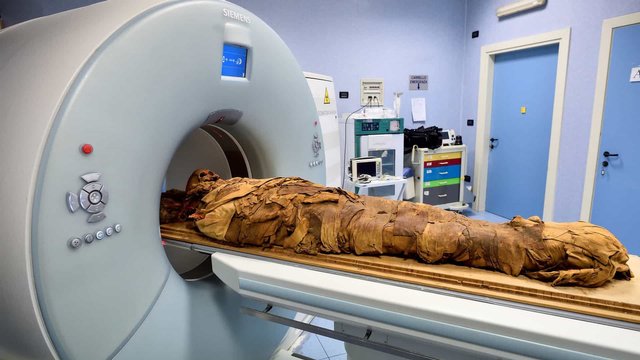
Polish researchers recorded in April 2021 the first known case of a pregnant Egyptian mummy.
On December 30 of the same year, the Journal of Archaeological Science revealed new information regarding the preservation of the fetus.
After the mummy was donated to the University of Warsaw in 1826, scientists assumed it was a male priest for the past few decades.
However, according to The New York Times website, in 2016 it was revealed that the mummy was a pregnant woman.
A year earlier, the discovery was made in a study covering more than 40 mummies at the National Museum in Warsaw.
The mummy was named the Mysterious Lady because of the enigmas that surrounded its trajectory. Although many mysteries have already been unraveled, scientists still needed to discover more information about her pregnancy and how the fetus was preserved inside the mummy.
How was the fetus preserved inside the mummy?
According to experts, the mummy in question was approximately 20 to 30 years old when he died.
According to information from the Heritage Daily portal, it is estimated that the woman was between the 26th and 30th week of pregnancy.
This new research, published in December 2021, reports how the fetus remained preserved inside the mummy even after more than two thousand years due to an unusual decomposition process.
The fetus was covered in natron, a mineral composed of hydrated sodium carbonate and sodium bicarbonate and small amounts of sodium chloride and sodium sulfate.
As the fetus was still in the uterus, the Ph was altered due to chemical processes linked to the decomposition process; formic acid and other compounds were formed. Because of this change from the alkaline to the acidic environment, decalcification of the fetus's bones was caused.
As a result, the bones began to dry out and mineralize, and the fetal soft tissue continued to be perfectly preserved. Later, the researchers of the project, Warsaw Mummy Project, noticed difficult bones in the X-rays and CT scans.
"After a person dies, formic acid starts to be released into the blood, and the environment in the deceased's body becomes acidic.
A similar phenomenon occurred in the womb of the mysterious lady", informed the scientists through a post on Facebook.
Also according to the publication, fetal bones are poorly mineralized by nature, especially before the seventh month of pregnancy.
In this period, they largely dissolve. "Later, when the mother's body was embalmed, the uterus and fetus dried up," experts explained in the post.
Since the researchers considered the discovery unique, they continue to investigate this phenomenon.
New articles on the pregnant mummy are slated to be published, dating to approximately the 1st century BC.
Furthermore, the mummy is a woman of high status, to be reckoned with for the clothes she is wearing: linen and fabrics, along with expensive ensembles of amulets.